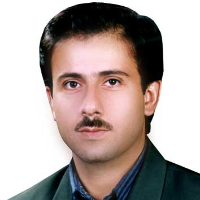Direct measurement and simulation of flooding amount effect on recharge rate in Gareh Bygone floodwater spreading system
Water scarcity due to climate change and a growing water demand in different consumption sectors is a major environmental crisis that drives arable lands to the state of degradation, especially in dry regions. Artificial recharge of groundwater (ARG) through floodwater spreading (FWS) which is a potential measure for reversing this emerging trend is investigated in this research. Floodwater harvesting has become an increasingly important technique to improve water security and caused a renewed interest in research and implementation. According to the diverse objectives and methods of implementing artificial recharge of groundwater (ARG) systems, various factors need to be considered when choosing a method for quantifying recharge. Therefore, the rate of aquifer recharge is one of the most difficult items to measure in groundwater (GW) resources evaluation . In soil water balance method (and in Zero Flux Plane method as well), soil water movement is inferred by measuring the changes in water content of the soil profile by gravimetric sampling or automatic devices. These methods have not been proven satisfactory in low flow conditions, as there is often insufficient resolution to detect movement of small quantities of water. Therefore, other methods, based on hydraulic conductivity, potential gradients and directly calculated water fluxes for unsaturated flow were developed. The Buckingham-Darcy law can be used under the steady flow condition where water contents and fluxes change with depth but do not vary as a function of time . It has been employed in arid and semiarid conditions for recharge estimation . or for assessing the exchange flow between surface water reservoir and GW. The method requires measurements or estimates of the vertical total head gradient and the unsaturated hydraulic conductivity at the ambient soil water content following the Buckingham-Darcy equation . The overall objective of this research is to evaluate a floodwater spreading system that was installed in 1981 at the Gareh Bygone Plain, southern Iran for recharging the groundwater table. To assess artificial recharge of groundwater through turbid floodwater spreading, three wells, ~30 m deep, were dug in a 37-year-old recharge basin in planted Acacia forest, bare soil and pasture land uses, respectively. Soil hydraulic parameters of the vadose zone layers (30 m thickness) were measured in the field and laboratory. One well was equipped with pre-calibrated TDR sensors throughout the well profile for measuring the changes in soil water content along the vadose zone. The volumetric soil-water content was measured continuously from August 2010 to May 2019 with closer temporal increments after floodwater spreading events. Rainfall, ponding water depth, and its duration were also measured. Recharge through the vadose zone was assessed by soil-water balance (SWB) method, as measured in the field as well as by calibrating Hydrus-1D (H1D) model through inverse solution. Results showed that the wetting front was interrupted at a layer with fine soil accumulation over a coarse textured gravely layer at the depth of ~4 m. The large differences in hydraulic conductivity of the two successive layers seemed to cause transformation of the wetting front water movement into fingering flow. The changes in downward water flux complicated TDR measurement after the depth of 4 m. however, noticeable but temporarily changes in the soil water content were detected in some of the layers below the 4 m was evidence for fingering flow after the flood events. Validation of the simulated flow by the H1D model vs the observed by SWB (with RMSE 3.45; R2 0.994) showed that the model performed well in flux estimation and. Recharge ratio was calculated for the 2010 to 2019 events as 26 to 84 average 55% for all events and 63 to 84 average 75% for large impounded floodwater in the basin, respectively. Although a reliable set of data is obtained for calculating recharge at the very location of this study, up-scaling of the results for the entire floodwater systems and for the other flooding events with extreme volumes and flow rate needs extended investigation period and thorough identification of the underlying layers. The determined hydraulic properties of the RLs obtained in this study will be utilized in the future research works in the FWS systems in our study site. The contributions of this thesis can be summarized as: a) development of approaches for application, calibration and validation of existing models with limited available data, b) incorporation of new concepts into the models used, c) generating a unique and robust field data set to support the modelling approaches, and d) provision of new information in the context of floodwater harvesting and its impact on groundwater recharge. Floodwater harvesting, especially in the form of FWS, is an emerging issue in water management in dry regions, which needs better understanding and evaluation of its impact on the surrounding environment. Small scale but nature friendly water management plans, such as FWS systems, are seriously criticized, since there are numerous methods, which are more attractive in terms of investments and money return to investors. However, they are rarely investigated. This study provided quantitative evidences that proves the effectiveness of FWS systems.
- حق عضویت دریافتی صرف حمایت از نشریات عضو و نگهداری، تکمیل و توسعه مگیران میشود.
- پرداخت حق اشتراک و دانلود مقالات اجازه بازنشر آن در سایر رسانههای چاپی و دیجیتال را به کاربر نمیدهد.



